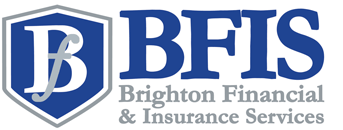What you need to know about Self-Directed IRAs: A Comprehensive Guide
See How We're Different
or call us: 888-412-7630

By: Vernon Williams | Commercial Agency Advisor & Principal
888-412-7630 | vwilliams@thebrightonfinancial.com
In today's uncertain financial landscape, many individuals are seeking
alternative investment options beyond traditional retirement plans. One approach that has gained significant popularity is the self-directed individual retirement account (IRA). In this comprehensive guide, we will explore the basics of self-directed IRAs, their mechanics, benefits, risks, and how they compare to other retirement plans.
Understanding the Basics of Self-Directed IRAs
When it comes to planning for retirement, many individuals are looking for ways to have more control over their savings and investments. One option that has gained popularity in recent years is the self-directed Individual Retirement Account (IRA). Unlike regular IRAs, which typically limit investment options to stocks, bonds, and mutual funds, self-directed IRAs provide investors with the ability to invest in a wide range of non-traditional assets.
Defining Self-Directed IRAs
A self-directed IRA is a retirement account that allows individuals to have more freedom and flexibility in choosing their investment options. With a self-directed IRA, investors can go beyond the traditional asset classes and explore alternative investments such as real estate, private equity, precious metals, and even cryptocurrency. This opens up a whole new world of possibilities for those who are looking to diversify their portfolios and potentially earn higher returns.
One of the key advantages of self-directed IRAs is that they offer investors the opportunity to take advantage of their knowledge and expertise in specific industries or asset classes. For example, if an individual has a deep understanding of the real estate market, they can use their self-directed IRA to invest in rental properties or real estate development projects. This allows them to leverage their expertise and potentially generate significant wealth for their retirement.
The History and Evolution of Self-Directed IRAs
The concept of self-directed IRAs can be traced back to the Employee Retirement Income Security Act (ERISA) of 1974. This legislation was enacted to protect the retirement savings of American workers and introduced the concept of individual retirement accounts. Initially, self-directed IRAs were primarily used for investing in real estate, as this was seen as a tangible asset that could provide a reliable source of income in retirement.
Over the years, the popularity of self-directed IRAs has grown significantly. This can be attributed to several factors. Firstly, investors have become more interested in diversifying their portfolios and exploring alternative investment opportunities. With the volatility of the stock market and the low interest rates offered by traditional savings accounts, many individuals are looking for ways to potentially earn higher returns.
Secondly, the advancements in technology and the rise of online investment platforms have made it easier for individuals to set up and manage self-directed IRAs. Gone are the days when investors had to rely on financial advisors or banks to make investment decisions on their behalf. With self-directed IRAs, investors have the freedom to research, analyze, and make investment decisions on their own terms.
Today, self-directed IRAs have become a powerful retirement planning vehicle for savvy investors. They offer the opportunity to diversify one's portfolio, take advantage of alternative investment opportunities, and potentially earn higher returns. Additionally, self-directed IRAs still enjoy the tax advantages associated with retirement accounts, such as tax-deferred growth and the ability to make tax-deductible contributions.
It is important to note that while self-directed IRAs offer greater flexibility and control, they also come with certain responsibilities. Investors must ensure that they comply with IRS rules and regulations regarding prohibited transactions and disqualified persons. It is recommended to work with a qualified custodian or administrator who specializes in self-directed IRAs to ensure compliance and maximize the benefits of this retirement planning strategy.
The Mechanics of Self-Directed IRAs
Self-directed IRAs offer individuals the opportunity to take control of their retirement investments and explore a wide range of investment options. While the setup process is similar to that of a traditional IRA, there are some key differences that make self-directed IRAs unique.
How Self-Directed IRAs Work
Setting up a self-directed IRA follows a similar process to that of a traditional IRA. The key difference lies in the custodian or trustee. While traditional IRAs are typically held by banks or financial institutions, self-directed IRAs require a specialized custodian who specializes in handling alternative investments.
These custodians play a crucial role in facilitating the investment process. They assist the account holder in executing transactions and ensure compliance with IRS rules and regulations. Their expertise in alternative investments allows them to guide investors through the complexities of investing in non-traditional assets.
Once the self-directed IRA is established, the account holder has the freedom to choose from a wide range of investment options. Unlike traditional IRAs, which are limited to stocks, bonds, and mutual funds, self-directed IRAs open up a world of possibilities. Investors can explore real estate, private equity, precious metals, cryptocurrencies, and much more.
With this increased flexibility comes the need for careful due diligence. Self-directed IRA investors must thoroughly research and understand the risks associated with each investment opportunity. They should consider factors such as market conditions, potential returns, and the long-term viability of the investment.
Setting Up a Self-Directed IRA
Setting up a self-directed IRA involves a few key steps. Firstly, the individual must choose a qualified custodian who specializes in self-directed IRAs. This decision is crucial, as the custodian will play a significant role in the investor's journey.
The chosen custodian will guide the investor through the account setup process, including the completion of necessary paperwork and the establishment of a separate bank account for the IRA. This separate account ensures that the IRA's funds are kept separate from the investor's personal finances, maintaining the integrity of the investment.
Once the account is active, the investor can fund the self-directed IRA by making contributions or rolling over funds from existing retirement accounts. Contributions can be made in the form of cash, stocks, or other eligible assets. Rolling over funds from existing retirement accounts allows individuals to consolidate their retirement savings and take advantage of the self-directed IRA's investment opportunities.
With the account funded, the investor is then ready to explore the multitude of investment opportunities available. Self-directed IRAs provide investors with the freedom to invest in assets that align with their interests, expertise, and long-term financial goals. Whether it's investing in rental properties, private businesses, or alternative energy projects, self-directed IRAs empower individuals to take control of their financial future.
It's important to note that self-directed IRAs come with certain rules and restrictions. The IRS has guidelines in place to ensure that these accounts are used for retirement purposes and not for personal gain or immediate financial benefit. Investors must adhere to these rules to maintain the tax advantages associated with self-directed IRAs.
In conclusion, self-directed IRAs offer individuals the opportunity to diversify their retirement portfolios and explore alternative investment options. With the guidance of a specialized custodian, investors can navigate the complexities of self-directed IRAs and make informed investment decisions. By taking control of their retirement investments, individuals can potentially
achieve greater financial growth and security in the long run.
The Benefits of Self-Directed IRAs
When it comes to planning for retirement, self-directed IRAs offer a world of possibilities. These unique investment vehicles provide individuals with increased financial freedom and control over their retirement savings. By allowing investors to explore alternative assets, self-directed IRAs open up a whole new realm of diversification opportunities.
Financial Freedom and Control
One of the biggest advantages of self-directed IRAs is the increased financial freedom and control they offer. Traditional IRAs often limit investors to a narrow range of investment options, such as stocks, bonds, and mutual funds. However, with a self-directed IRA, individuals have the ability to invest in a wide variety of alternative assets.
Imagine having the power to choose where your retirement funds are invested. With a self-directed IRA, you can do just that. Whether you have a passion for real estate, a keen interest in precious metals, or a desire to invest in private equity, a self-directed IRA allows you to align your retirement savings strategy with your unique financial goals and risk tolerance.
By diversifying your portfolio with alternative assets, you can potentially achieve higher returns and reduce your exposure to market volatility. This flexibility is especially valuable in uncertain economic times, as it allows you to explore investment opportunities beyond the traditional stock market.
Diversification Opportunities
Self-directed IRAs present an array of diversification opportunities beyond traditional investment options. While stocks and bonds have long been the go-to choices for retirement savings, self-directed IRAs allow investors to think outside the box and explore alternative assets.
Real estate, for example, has long been considered a stable and lucrative investment. With a self-directed IRA, you can invest in residential properties, commercial buildings, or even rental properties. This not only provides you with potential rental income but also allows you to benefit from property appreciation over time.
Precious metals, such as gold and silver, are another popular alternative asset for self-directed IRAs. These tangible assets have a long history of retaining value and can act as a hedge against inflation. By including precious metals in your retirement portfolio, you can diversify your holdings and potentially protect your wealth.
Private equity is yet another option for self-directed IRAs. By investing in private companies or startups, you have the opportunity to support innovative ideas and potentially reap significant rewards. While private equity investments carry higher risks, they also offer the potential for substantial returns.
By exploring these and other alternative assets, you can reduce your exposure to fluctuations in the stock market and achieve a more balanced portfolio. Diversification is a cornerstone of prudent investing, and self-directed IRAs provide investors with greater options to achieve just that.
The Risks and Challenges of Self-Directed IRAs
Potential Pitfalls to Avoid
While self-directed IRAs offer enticing benefits, there are certain risks to be aware of. One common pitfall is falling prey to investment scams or fraudsters who exploit investors' lack of knowledge or oversight. It is crucial for self-directed IRA investors to thoroughly research and perform due diligence when considering alternative investments.
Additionally, self-directed IRAs require diligent record-keeping and compliance with IRS regulations to maintain their tax-advantaged status. Failure to adhere to the rules can result in severe penalties or even the disqualification of the entire IRA.
Understanding the Rules and Regulations
Self-directed IRAs operate within the framework of IRS regulations and guidelines. It is essential for investors to understand the specific rules surrounding prohibited transactions, contribution limits, and distribution requirements. Partnering with an experienced custodian who specializes in self-directed IRAs can help ensure compliance and minimize the risk of unintended violations.
Comparing Self-Directed IRAs to Other Retirement Plans
Self-Directed IRAs vs. Traditional IRAs
Compared to traditional IRAs, self-directed IRAs offer a broader range of investment options. While traditional IRAs focus on stocks, bonds, and mutual funds, self-directed IRAs open doors to real estate, private equity, precious metals, and more. This expanded asset selection can provide investors with opportunities for potentially higher returns and increased portfolio diversification.
Self-Directed IRAs vs. 401(k)s
Self-directed IRAs differ from 401(k)s in terms of eligibility and control. 401(k)s are employer-sponsored retirement plans, whereas self-directed IRAs are available to individuals regardless of employment status. Furthermore, 401(k)s often have limited investment choices determined by the employer, while self-directed IRAs grant individuals greater control over their investment decisions.
However, 401(k)s may offer certain advantages such as employer matching contributions and higher contribution limits. Choosing between a self-directed IRA and a 401(k) ultimately depends on an individual's circumstances and investment goals.
As the financial landscape continues to evolve, self-directed IRAs have emerged as a powerful tool for investors seeking greater flexibility and control over their retirement savings. By understanding the basics, mechanics, benefits, risks, and how they compare to other retirement plans, individuals can make informed decisions to secure their financial future.
Request A Quote
Get Started Today!
We'll Reply in 15min or less*
Contact Us
*Response time varies based on hours of operation













